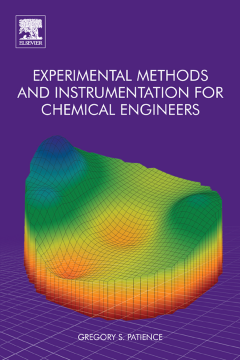
Additional Information
Book Details
Abstract
Experimental Methods and Instrumentation for Chemical Engineers is a practical guide for research engineers and students, process engineers and, consultants, and others in the chemical engineering field. This unique book thoroughly describes experimental measurements and instrumentation in the contexts of pressure, temperature, fluid metering, chromatography, and more. Chapters on physico-chemical analysis and analysis of solids and powders are included as well.
Throughout the book, the author examines all aspects of engineering practice and research. The principles of unit operations, transport phenomena, and plant design form the basis of this discipline. Experimental Methods and Instrumentation for Chemical Engineers integrates these concepts with statistics and uncertainty analysis to define factors that are absolutely necessary to measure and control, how precisely, and how often.
Experimental Methods and Instrumentation for Chemical Engineers is divided into several themes, including the measurement of pressure, temperature flow rate, physico-chemical properties, gas and liquid concentrations and solids properties. Throughout the book, the concept of uncertainty is discussed in context, and the last chapter is dedicated to designing and experimental plan. The theory around the measurement principles is illustrated with examples. These examples include notions related to plant design as well as cost and safety.
- Contains extensive diagrams, photos, and other illustrations as well as manufacturers' equipment and descriptions with up-to-date, detailed drawings and photos
- Includes exercises at the end of each chapter, helping the reader to understand the problem by solving practical examples
- Covers research and plant application, including emerging technologies little discussed in other sources
"He covers measurement and analysis, experimental planning, pressure, temperature, fluid metering, physicochemical analysis, gas and liquid concentration and analyzing solids and powders. Detailed example calculations are provided throughout to help students grasp the mechanics of solving problems, and to underline pitfalls in making these calculations."--Reference & Research Book News, October 2013
